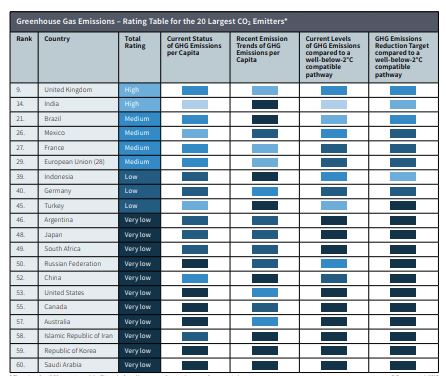A blanket of CO2 has enveloped the world. And continues to deteriorate our climate. Frequency of heatwaves has increased, habitats have started to shift, spread of disease, raising sea levels and other not so subtle and often violent changes in the climate are now reality due to growing CO2 emission levels. Daily Global CO2 emission levels now stand at 406.47 parts per million. It is important to note that CO2 emission levels have never risen this high in last 400,000 years. Our fossil fuel usage is the primary reason behind this rise (80% of CO2 emissions come from fossil fuel combustion) that is presenting devastating changes within the environment. Fortunately, now the world is taking initiatives towards reducing the CO2 emission. However, the damage to the climate that we have done through decades of fossil fuel usage cannot be undone instantly; therefore, what the world needs is long term strategies to reduce carbon emission by adopting green energy and reducing fossil fuel usage.
The Change Has To Come
In the Paris Agreement, countries have pledged to reduce their respective carbon emission levels by taking on various energy saving, smart city/transport building strategies. However, the centre of these initiatives is green energy adoption. Fossil fuel usage has led the technological growth, but it still fails to provide energy to 1.6 billion people around the world. Therefore, creating long-term strategies revolving around green energy transition seems to be not just an option but also a necessity now. These strategies/policies should focus on continuous investment towards renewable growth and increase of solar adoption globally.
A Few Climate Protection Measures
Understanding the urgency of protecting climate from further degradation, countries around the world have implemented or in the way of incorporating measures.
In the same breath, we should point out national programmes within the EU that are aimed towards reducing CO2 emissions. These strategies have made positive changes in climate improvement. These plans mainly focus on-
The EU adopted climate and energy package in 2009, with a focus of 20% reduction of GHG emissions than the statistics in 1990.
Climate awareness in Canada has seen nearly 97% of its residents to commit towards pricing carbon pollution. Provinces like Quebec and Ontario in Canada have implemented cap-and-trade systems- enforcing to get permits for carbon pollution, curbing the pollution rate.
Being one of the top ten CO2 emitters, India is also moving forward and implementing measures to support climate improvement.

Green house gas emission rating (Image curtsey: CCPI)
Besides solar energy growth in India, the country is also implementing supporting policies like carbon pricing to support climate restoration. And as a result in 2017, 40 Indian companies out of 139 companies in Asia have put price on carbon.
Government of India’s initiative towards Perform-Achieve-Trade (PAT) policy for energy efficiency, and renewable energy certificate scheme have also supported carbon pricing. World Bank and the Government of India are working together to explore a domestic carbon market in micro, small, and medium enterprises.
Championing Solar through Global collaboration
It is easy to understand that drafting, upholding and maintaining long-term climate protection strategies/policies can be challenging for developing countries. Therefore, a global acceptance and collaboration is needed to transform these strategies into reality. Cross-country collaboration can offer-
Information Base- Both the developed and developing countries working together can help all to access information on solar sector that dominant countries have already amassed. This will reduce the chance of mistake for developing countries and allow them to build a solar sector much quicker.
Technology Exchange- Global collaboration in solar will help countries to reduce their technology implementation curve. With developed countries sharing new technology, innovation will reach farthest corners of the world very easily, thus speeding up solar energy transition and maintaining the primary driver of long-term climate improvement strategy.
New Markets for Export- Global collaboration will also open up a new untapped market for developing countries to export solar equipment, thus encouraging these countries to invest in manufacturing. It will urge in skill development, create jobs, help in industrial growth, help claim the solar export market and generate revenue.

Climate improvement performance (Image curtsey: CCPI)
What Solar At the Centre of Long-Term Strategies Can Offer?
Since fossil fuel usage is the primary reason behind climate deterioration, only through adoption of sustainable energy can we restore the climate. And it is a fact that among various forms of renewable energy, solar received global acceptance as it is easy to manufacture, use, maintain, and feasible (followed by 90% drop in solar module prices) than other renewable energy choices. It is important to note that only 1 kW of green energy can reduce more than 3,000 pounds of CO2 annually. So, the long-term climate improvement strategies have to focus on governance, keeping solar adoption at the centre of the initiative. Actionable policy creation, support through investment in technology, stakeholder engagement, etc. can serve as governance and supporting strategies to facilitate a quicker solar adoption rate throughout the world. Because climate deterioration is a world problem, and it can only be solved when we all come together.
